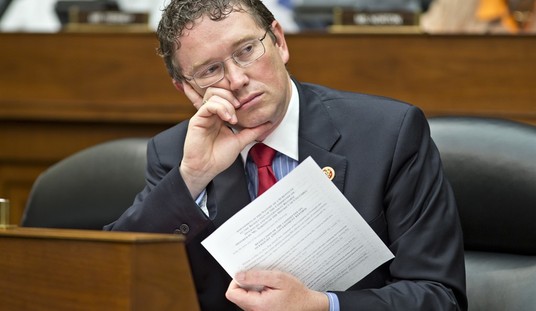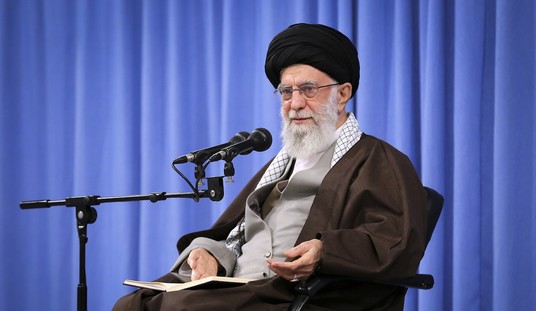We’re being told on a daily basis that CO2 emissions need to drop in order to avoid a future climate disaster. We’re also being told that we’re not doing nearly enough. In fact, globally we’re not seeing any reduction in CO2 emissions. If you look at the decade leading up to 2018 those emissions went up about 12%. But there’s a very big caveat to those numbers. Nearly all of the increase, just shy of 90%, is coming from just two countries:
Over the decade through 2018, emissions increased by 12%, or 4.5 billion metric tons of carbon dioxide. A decade or so of further pollution at that level will eliminate all possibility of avoiding catastrophic warming.
Break out the numbers by country, however, and a very different picture emerges. Some 89% of the additional greenhouse gases came from just two countries: China, which alone accounted for 69% of the increase, and India. Emissions from the EU, Japan and U.S. fell, and by 2018 were lower than they were in the 1990s.
Here’s Bloomberg’s graph showing the growth:

So while we heard a lot about President Trump leaving the Paris Accord behind, the U.S. actually has been doing a pretty good job in reducing its emissions without it. But those efforts won’t mean much overall so long as China and India are more than making up for any reductions we’ve made. To put this another way, if you’re hoping to see a global reduction in CO2 emissions over the next decade it pretty much rests in the hands of one person:

Xi Jinping reportedly has a plan to reach net zero emissions by 2060. The NY Times wrote about it last year:
Under the Paris climate deal reached in 2015, China pledged that its emissions would peak around 2030. Mr. Xi promised on Tuesday to move up that timetable, though he did not provide specifics. The bigger surprise, analysts said, was Mr. Xi’s pledge to reach “carbon neutrality” — meaning China’s net carbon emissions will reach zero — by 2060.
That’s what China is saying, but again, what it is actually doing thus far is something else:
Coal consumption, which had declined from 2013 to 2017, driven in part by a push to improve China’s notorious air quality, began to rise again in recent years as the economy faced economic headwinds and the government sought to stimulate industrial growth.
The rise was interrupted by the Covid-19 shutdown, but China’s economy is recovering more quickly than others. Research by Mr. Myllyvirta has shown that by May, carbon dioxide emissions from energy production, cement making and other industrial uses were 4 percent higher than the year before. China also granted more construction permits for coal-fired power plants in the first six months of 2020 than it had each year in 2018 and 2019.
China’s next 5-year-plan is set to be unveiled this week. That’s when we’ll find out just what China is planning to do on this in the near term and whether or not it matches up with the promises they made last year.
One final point about this that comes from my deep suspicion of the CCP. China is not averse to taking hostages to make a point. We’ve seen that with the two Canadian businessmen who were arrested and put in prison as leverage to push Canada not to extradite Huawei CFO Meng Wanzhou to the United States. With that in mind, I’m a bit surprised they haven’t resorted to some kind of carbon reduction blackmail scheme.
Most of the western world now so obsessed with climate change that a high school student from Sweden became an international star for traveling around and scolding the world. She met with Presidents and Prime Ministers, sneering as she went, and people thought she was great. Meanwhile, China is the largest impediment to any global reduction in CO2 emissions. That seems to put Xi Jinping in a unique position of power. He can grant or withhold something the world desperately wants. It’s a bit surprising to me that he’s not demanding something for it. At a minimum, I’d expect him to claim equal billing with Greta Thunberg on her next world tour.
Update: I knew someone had written a good piece about this a couple years ago and I finally found it. It was Megan McArdle back in 2019.
Today, the United States accounts for 4.3 percent of the world’s population, roughly 25 percent of its economic output and 15 percent of its carbon emissions from fuel combustion. Meanwhile China, with 18 percent of the world’s population, has 15 percent of its gross domestic product and 28 percent of its emissions. And India, with a population almost as big as China’s, produces only about 3 percent of global GDP and 6 percent of emissions.
Looking at these three countries brings the scale of the problem into focus. There is a small, rich world that lives in comfort and plenty, and a much larger, poor one that wants to get rich. To do so, those billions of people will pass through an intermediate stage when their developing industries are much dirtier than their highly regulated rich-world counterparts. The global emissions problem is likely to get much worse before it gets any better…
No matter what rich-world economies do about their energy consumption, or what “moral leadership” they exert, people in the non-rich world are going to want to drive cars instead of walking; to wash their clothes in machines instead of in a river; to cool their houses with air-conditioning; to eat meat every day — in other words, to do and own all the things that make modern rich-world lives so safe and pleasant.
The bottom line is that even if the U.S. puts a lot of money into greening out economy, it won’t change the world’s climate so long as China and India are taking a different approach. In fact, McArdle points out if our demand for fossil fuels diminishes that will likely make them cheaper and more appealing to everyone else.
Pushing the US economy to zero emissions won't fundamentally alter the problem because–and this is important–if we stop using fossil fuels, they actually get cheaper for everyone else, making developing countries more likely to develop in carbon-intensive ways.
— Megan McArdle (@asymmetricinfo) February 14, 2019
It wouldn’t be the first time that good intentions had unexpected, counter-productive outcomes.








Join the conversation as a VIP Member